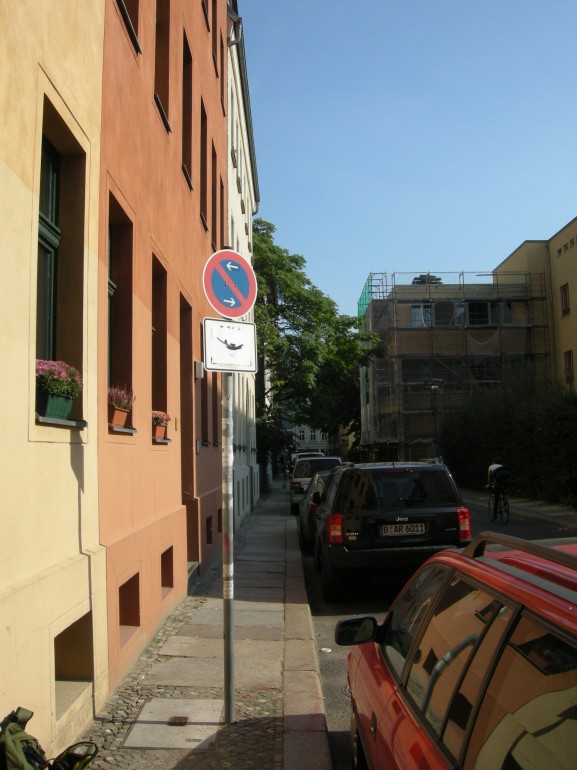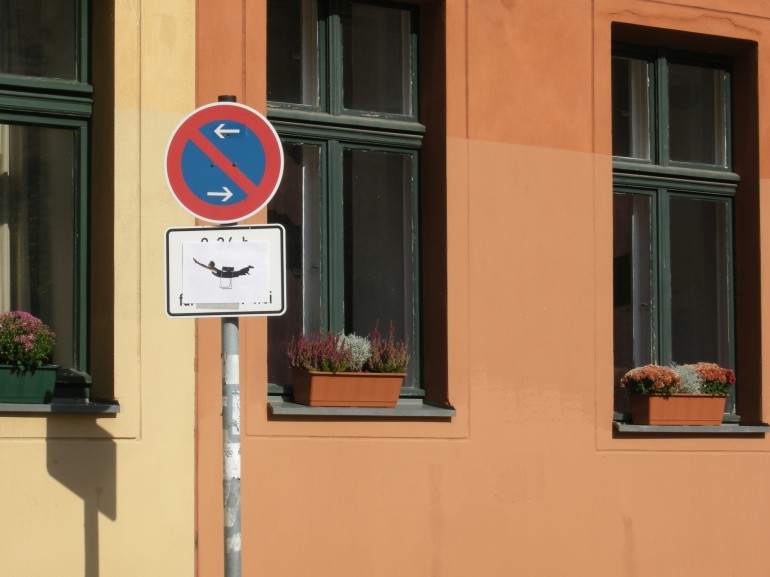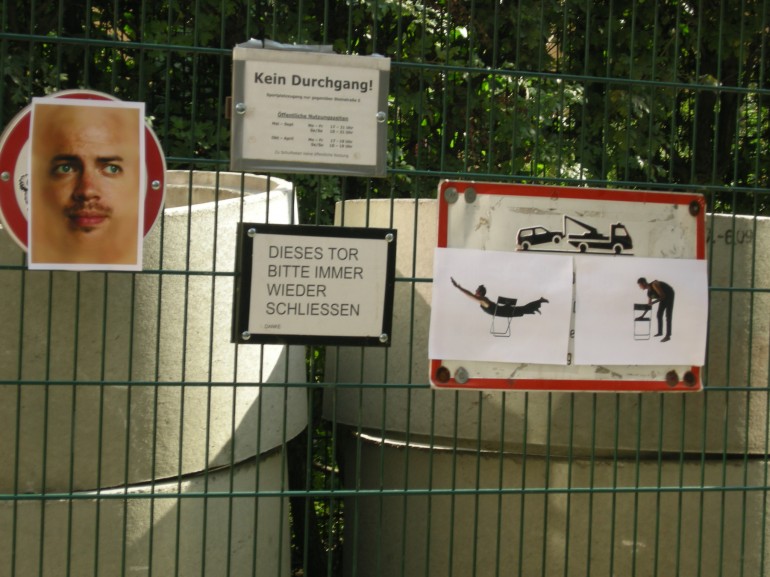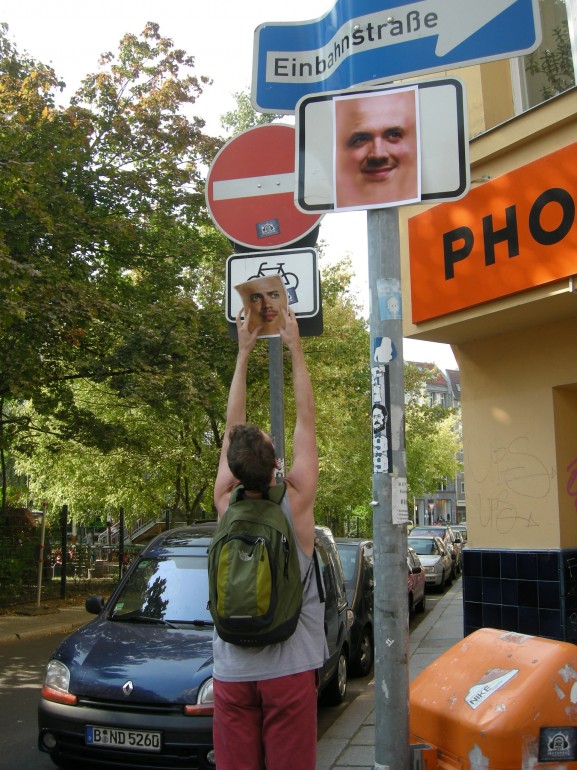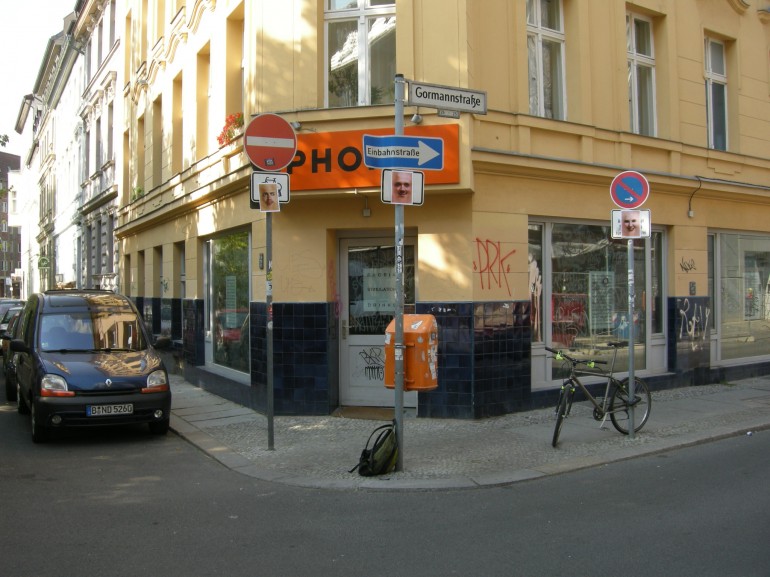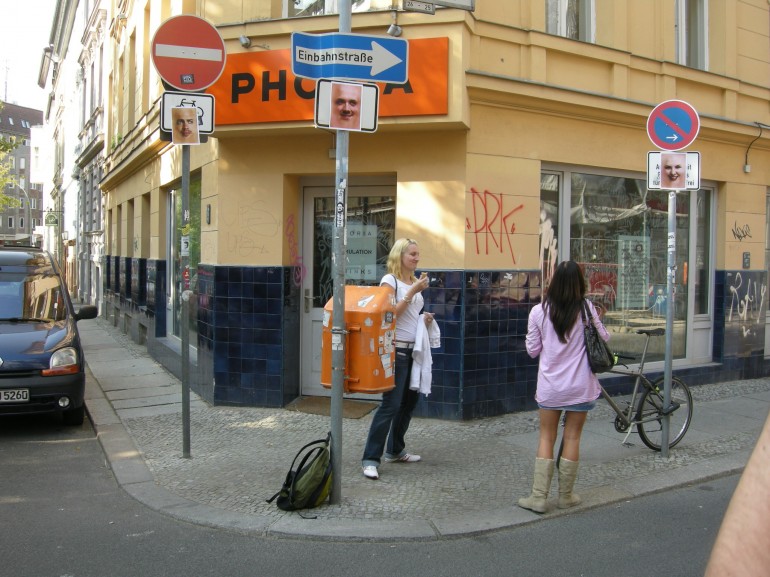Gallery Signs: Instructions & Guidebook
Seven Signs for Horizontality
Instruction Manual
0. Download, print, or tear out sign image.
0. Fasten to existing sign as you see fit.
Guidebook
0. The sign (the kind on the street, not the Saussurian kind) is a contained, exclusively visual indicator that orchestrates power relations and their consequent behaviors. Signs choreograph bodies and spatial relations by confronting people in inhabited space, the lived horizontal plane. No parking. Left turn only. To explode the sign as container and purveyor of a rule while retaining its pre-given shape and place in space, is, of course, to interrupt its signifying capacity. A sign could never possibly contain the infinity and potentiality embodied in a face, unless through a lewd act of symbolic framing it should grossly reduce the face to less than what it is.
0. There is also a horizontal relationship among signs, which inhabit and dictate to a certain extent the relational quality of inhabited horizontality itself. To this end, horizontality and what populates it constitute a sense of interiority.
0. Signs articulate the horizontality of order by assuming a vertical position in horizontal space. They jut out of to the horizontal, yet never transcend it, but do manage to assume a vertical position of prominence, Signs, in the everyday visual field, are the most readily beheld talismans of a sense of being governed, ordered, arranged and synchronized. Signs contain either subtle, grossly articulated or altogether inarticulate expressions of power. Signs order order; they do not question it. To question the ordering effect of the sign, the good old body makes an appearance on the stage of the sign itself. Here, an expansion of the sign’s signifying prowess occurs through the cheesiness of unbounded faces and an attempt to fly. In cheesiness there is potential for connection. Through such connection, the sign becomes continuous and expansive rather than restricting and contained. Blurring boundaries of the face: the face bears in itself potentiality for relations, which are not didactic, but emotional. Said emotionality points beyond the individuality of emotion
0. Architecture is neither entirely human nor entirely human scaled. Beavers make dams. Their impeccable engineering provokes awe among their human colleagues; to be a bit glib, beaver dams are more horizontally functional than anything humans have ever made. Low transport costs, high efficiency, low carbon footprint. Ideally a supplemental to and supportive of human life, some architectural forms achieve the opposite: they impose themselves on the species. Understanding the human scale in architecture hinges on taking into account an immediate rather than mediate or remote field of sensation. The relation of humans and architecture as a supplementary one is a simulacrum.
0. The vectors of an ancient calculus continue to dictate space. If we take the human species as belonging to space carved up by vectors and mere horizontal and vertical planes, things begin to feel a little 16th century, a little rationalist, a lot Euclidean. This may help to rethink space: “Smooth space is precisely the space of the smallest deviation: therefore it has no homogeneity, except between infinitely proximate points, and the linking of proximities is effected independently of any determined path. It is a space of contact, of small tactile or manual actions of contact, rather than a visual space like Euclid’s striated space. Smooth space is a field without conduits or channels. A field, a heterogeneous smooth space, is wedded to a very particular type of multiplicity: nonmetric, acentered, rhizomatic multiplicities that occupy space without ‘counting’ it and can ‘be explored only by legwork'” (D & G, A Thousand Plateaus).
0. Warning: Horizontality is not a universalizable category, although it can be descriptive of experiences of suburban and urban spaces.
0. Overcoming impossibility. Chair and flying: childlike gesture toward superhumanity: putting the body’s impossibility into the sign. All of us try to fly as a kid. In real architecture in real life, the bigger you go, the higher the building is, the more super it is and we are. Abu Dhabi. Empire State Building. Mega-money financial person banker superhumanity. Children learn they are physically unable to fly. Big Daddy Skyscraper Architect does not eventually realize that he cannot transcend the sky but thinks he already has.

